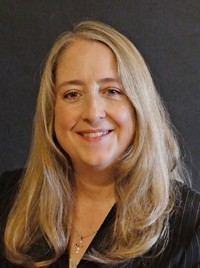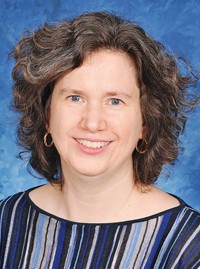Advertisement
Grab your lab coat. Let's get started
Welcome!
Welcome!
Create an account below to get 6 C&EN articles per month, receive newsletters and more - all free.
It seems this is your first time logging in online. Please enter the following information to continue.
As an ACS member you automatically get access to this site. All we need is few more details to create your reading experience.
Not you? Sign in with a different account.
Not you? Sign in with a different account.
ERROR 1
ERROR 1
ERROR 2
ERROR 2
ERROR 2
ERROR 2
ERROR 2
Password and Confirm password must match.
If you have an ACS member number, please enter it here so we can link this account to your membership. (optional)
ERROR 2
ACS values your privacy. By submitting your information, you are gaining access to C&EN and subscribing to our weekly newsletter. We use the information you provide to make your reading experience better, and we will never sell your data to third party members.
Policy
The N&E Process: What Happens Before You See The Ballot To Elect The President-Elect
by Thomas H. Lane
November 30, 2009
| A version of this story appeared in
Volume 87, Issue 48
There has been a lot of interest in how the Committee on Nominations & Elections (N&E) generates the slate of nominees for the office of president-elect of ACS. This renewed interest has been stimulated by the fact that N&E has been working to refine the process at the behest of participants, councilors, and members of the society.
Understanding the current process is a good foundation for all of us, one that should help us better comprehend the potential impact of the proposed changes that will be on the spring council agenda in 2010. The current process is formally described in the society's Constitution and Bylaws, and its implementation is the responsibility of the 15 councilors of N&E who are elected by their peers. N&E is a very diverse and hard-working group of councilors. When I was asked to be a nominee for president-elect, I certainly did not fully appreciate the months of effort that N&E invested in the process to create the list of potential nominees. I have been a participant in the process, so let me describe the logistics N&E carries out to fulfill its duties.
Here's how it works. In the months before the fall national meeting, a subcommittee of N&E, with broad input, develops lists of potential nominees for the office of president-elect. Where does this input come from? Everywhere! Names for consideration are sometimes self-nominated, but the majority come from suggestions from ACS members, division or committee chairs, members of council or the ACS Board of Directors, and of course, from the personal networks of N&E.
Using job descriptions developed with input from the board and officers of the society, the subcommittee arranges these names into lists for consideration by the full committee. Along with the requirements and duties of the job, these profiles describe selection criteria to consider for president-elect, including but not limited to demonstrated leadership abilities, outstanding service in ACS, scientific or technical achievements, distinguished service on the ACS Board of Directors and distinguished service in positions of leadership in other professional organizations or technical bodies, and the skills and abilities to carry out the duties of the office.
The goal of N&E is to provide a diverse, qualified slate of four nominees to council, which then selects two candidates at the spring national meeting. These candidates (along with any candidates selected by member petitions) are then placed on the ballot that goes to the membership for final selection in the fall.
At the fall national meeting, the full N&E committee considers this highly qualified spectrum of potential nominees and, based on their collective decision, establishes the order in which to approach people to ask if they will become a nominee for president-elect. The process of developing the slate of nominees begins after the committee's deliberations are finalized and continues until four people have said, "Yes, I will be a nominee." Eventually, the names of the four nominees become public, but at this stage those who have agreed to run (as well as N&E) are required to keep their willingness to run confidential.
At the spring national meeting, the four nominees are presented to council, and two are chosen as candidates. In recent years, the four nominees have also had the opportunity to address membership in a "town hall" style meeting on the Sunday before council makes its selection. Thirty days after the spring meeting, candidates may begin campaigning. At any time during this sequence, until July 15, a member can add their name to the ballot by following the well-established petition process. A successful petition candidate must submit a validated petition signed by at least 0.5 % of the ACS membership for the office of president-elect. When the slate is complete, the ballots to elect the president-elect, listing council-selected candidates and any validated petition candidates, are sent to the membership by Oct. 10 (usually in late September), and the election results are announced in mid-November.
Friends, I was honored to be asked by N&E to be a nominee for president-elect. After having agreed, I was so excited that it was hard to remain silent about my agreement from January until the agenda for the spring meeting was published. It was harder still not knowing who else had agreed to be a nominee. The uncertainty around the possibility of a petition candidate added to an incredible experience. Now that I have a better understanding of how the N&E process is designed to provide a level playing field for all, I truly appreciate the work they have done to help ensure that we have fair and competitive elections within ACS. I encourage membership to learn more about our election processes.
If you have suggestions to make the process better, please let your division or local section councilors know so that they can represent your ideas to the committee. You should always feel free to contact me directly (tom.lane@charter.net or maingeek1@gmail.com), and I will represent your thoughts on N&E.






Join the conversation
Contact the reporter
Submit a Letter to the Editor for publication
Engage with us on Twitter